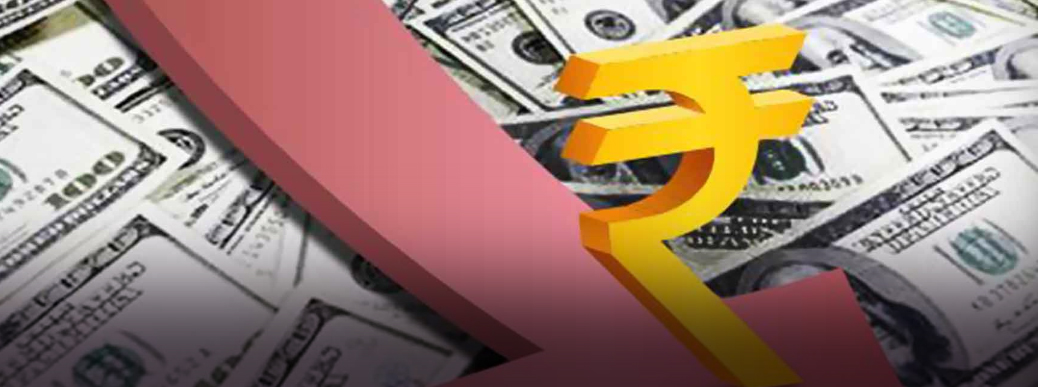Crash in Rupee
16, Aug 2018

- Rupee was crash to a fresh all-time low of 71.10 against the US dollar amid prevailing weakness in emerging market currencies.
- The government attributed the fall in the currency to global factors. All currencies have weakened against the dollar, but the rupee has not weakened very much in comparison to other currencies.
Reasons:
- The rupee has been mostly losing its strength against the US dollar since the beginning of February this year, the time when Union Finance Minister imposed LTCG on equities and global sell-off started due to escalated volatility in stock markets around the globe.
- The rupee is the victim of a contagion effect impacting all emerging markets (EMs) triggered by the Turkish crisis.
- Higher oil prices also led to a fall in the rupee. A sharp fall in the rupee is a panic reaction in response to oil price rise.
- Increasing tensions between the world’s two-largest economies the US and China has kept investors on edge amidst fears of global trade war.
- A divergence between US dollar appreciation and a moderation in Euro may have amplified the dollar strength, an effect of which reinforced rupee’s depreciation.
- Monetary policy announcements by the US Federal Reserve may have further led to investment re-routing with a derived pressure on rupee valuation.
- Foreign Institutional Investors (FIIS) have sold over 40,000 crores in debt and equity so far this year. A wider current account deficit and continuous outflow from FIIs pushed the currency lower.
Institutional Framework:
- RBI’s exchange rate management policy has aimed at maintaining orderly conditions in the foreign exchange market by eliminating lumpy demand and supply and preventing speculative attacks, without setting a specific exchange rate target.
- Towards this end, RBI has used a combination of tools including sales and purchase of currency in both the spot and the forward segments of the foreign exchange market, adjustment of domestic liquidity through the use of Bank Rate, Cash Reserve Ratio (CRR), Repo rate etc., and monetary sterilization through specialized instruments
- RBI has been intervening actively in the foreign exchange market during episodes of Rupee appreciation by purchasing foreign exchange, while following a hands-off approach during episodes of Rupee depreciation.
Impact:
- The rupee is the worst performer in Asia this year, depreciating 9% against the dollar. The current account gap is widening mainly due to a rise in international crude oil prices as India imports more than 80% of its requirements.
- Indian economy which already suffered from large fiscal and current account deficit adversely affected by relatively exchange rate pressure.
- Indian companies are reporting huge foreign exchange losses due to the depreciation of Indian rupee. This declines the overall profitability of these companies.
- There has been a strong and significant negative impact of this currency volatility on many sectors. This relationship will become more complex if there is the heavy dependence on imported resources in the exported products.
-
Merchandise trade:
This refers to a nation’s international trade, or its exports and imports. In general terms, a weaker currency will stimulate exports and make imports more expensive, thereby decreasing a nation’s trade deficit (or increasing surplus) over time.
- Foreign capital will tend to flow into countries that have strong governments, dynamic economies and stable currencies. A nation needs to have a relatively stable currency to attract investment capital from foreign investors. Otherwise, the prospect of exchange losses inflicted by currency depreciation may deter overseas investors.
-
Inflation:
A devalued currency can result in “imported” inflation for countries that are substantial importers.
-
Interest Rates:
As mentioned earlier, the exchange rate level is a key consideration for most central banks when setting monetary policy.
- A strong domestic currency exerts a drag on the economy, achieving the same end result as tighter monetary policy.
- Thus, the depreciating rupee puts pressure on prices and hence makes it difficult for the Reserve Bank of India which wants inflation within a range.
-
Current Account Deficit:
There is Pressure of increasing in it. The country with high exports will be happier with a depreciating currency India, on the other hand, does not enjoy this because of crude oil and gold consist a major portion of its import basket.
-
Foreign Investors
: Higher real interest rates generally attract foreign investment but due to slowdown in growth there is increasing pressure on RBI to decrease the policy rates.
- Under such conditions foreign investors tend to stay away from investing. This further affects the capital account flows of India and puts a depreciating pressure on the currency.
Way Forward:
- Maintaining a competitive real exchange rate is imperative for boosting intermediate and long-term economic growth and maintaining the external balance.
- Thus, using scarce foreign exchange reserves to prevent currency depreciation in the face of sustained downward pressure on the currency due to growing fiscal deficit and/ or massive capital outflows would be problematic, apart from being unsustainable.
- On the whole, for countries relying on volatile foreign capital inflows to finance their consumption and investment needs, a careful reserve management policy along with a sound fiscal policy are necessary to balance the multiple objectives of stable growth and external sector balance in the long run.
- The most positive impact of depreciation of rupee is the stimulation of exports and discouraging imports and thus improving the current account deficit.
- But Sinking Rupee is a big danger for Economy, the prevailing situation is creating internal as well as external threats for the economy. India may face worst financial crisis if it fails to stop the slide in the rupee.






